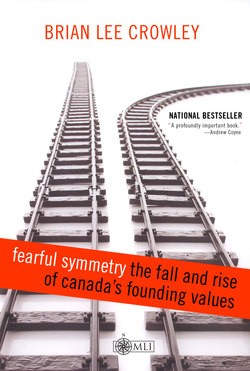Читать книгу Fearful Symmetry - the Fall and Rise of Canada's Founding Values - Brian Lee Crowley - Страница 8
На сайте Литреса книга снята с продажи.
Vertigo Warning: Don’t Look Down
ОглавлениеThis is not, however, a pessimistic book, although it certainly chronicles many tragically lost opportunities for Canada. I am an optimist because, fortunately, the ebbing of the flow of Boomers is about to lay bare for all to see the consequences of our mistakes of the past half century and to remind us of why the cultural, social, and economic values of our first century as a nation served us better than those we put in their place. The fearful symmetry to which the title of this book refers is nothing less than the rise of the New Canada under the impact of Boomers and Quebec nationalism over the last fifty years, and its unwinding over the next fifty years as the Boomer generation and Quebec’s bargaining power within Confederation both recede.
The precursors of the change that is coming—symmetry’s turning point—are there for all to see. One small wave has already washed over us. We are in the trough between the two, and the second, much bigger, wave is now towering above us.
The first wave struck us in the early eighties. According to David Foot,
the Canadian Boomers entered the labour force from the mid-1960s to the mid-1980s so over this period Canada experienced declining population growth but higher labour force growth resulting in a temporary economic dividend from demographic change. This has now evaporated....21
That helps to clarify how we paid for our massive expansion of the state. We borrowed, of course, and ran up an impressive national debt22 in the process as we consumed public services for which we were unwilling to pay commensurate taxes. But just as important was the demographic dividend Foot describes.
Its evaporation coincided with our worsening fiscal position, with our need to improve productivity (which gave birth to free trade with the Americans) as well as with increasing resistance to abusive welfare policies that had allowed many people to escape working. So the first mini-wave of painful adjustment brought us trade opening, the battle to defeat the deficit at both the federal and provincial levels, and a wave of welfare reform at both the provincial23 and federal (Employment Insurance reform and reductions in transfers to the provinces to finance welfare) level. Yet that was during a period when the labour force was still growing faster than the population in general, although the gap had already closed considerably compared to the sixties and seventies. When the next wave of demographic change hits, that first mini-wave of change will look like glory years.
We are already suffering its first early ripples, even though the big wave is still several years away. Starting in 2011, population will grow faster in Canada than the labour force, and that trend will continue for forty years. Already today, after nearly fifty years of the labour force growing by an average of 1 per cent a year every year (and often much more), we are in a period when it is growing at half that rate. By 2016, a few short years away, the number of net new workers entering the workforce will be zero and will be slightly negative for a decade after that. We are teetering on the edge of a demographic cliff, and we have one foot out in the air.24
